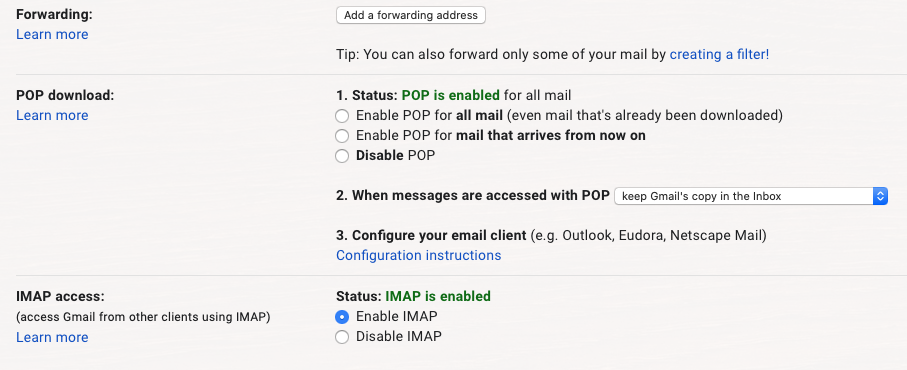Why Your Organization Needs a Free Secure Email Account?
Does your company have a free secure email account, or are you risking your organization’s and your customer’s valuable information?
Although we have seen in the recent few years organizations communicate both internally and externally in many different ways, including video calls, chat rooms, audio conferencing and so on, email remains the most popular method.
That’s even though the email technology and the protocols running it are, with some changes, over 50 years old.
Now, think about that for a moment. Five decades is a pretty long time and a whole lot has changed since. It was simply not possible to predict that the email and the Internet as a whole would be used at the scale that they are used today and that they would be such important parts of our lives.
What is more important, it was also not possible to predict that, with the number of people using the email, how much various security risks will emerge to threaten our sensitive information that we might share via email.
Where Does Your Email Go Once You Press “Send” and Why This Should Concern You?
Did you ever consider where your email exactly goes when you send it?
Obviously, it goes to the recipient’s email address, but if you think that it goes directly there in a straight line, you are dead wrong.
Instead, your email, with all its sensitive information travels all over the Internet, through several servers, until it finally reaches the recipient and they are able to open it and read it.
Once you compose an email and send it to a specific email address, its first stop is the SMTP server. Think of the SMTP server as a local post office that checks the address to know where it should send your email.
However, the SMTP server doesn’t deal with domains, such as gmail.com, yahoo.com and similar. For that, it requires the help of another type of server called the DNS server, or the Domain Name System server. What the DNS server does is translate the domain into a numerical IP address that looks like this: 192.100.100.2. But that’s not all that a DNS server does. It also needs to check for MX or Mail Exchange servers on that particular domain.
Once the DNS server has all this info, it relates it back to the SMTP server, which in turn sends the message to the recipient’s MX server, called the MTA, or Mail Transfer Agent. The MTA server is then responsible for finding the best way to deliver the email to the recipient’s account.
Finally, the recipient can fetch the email using either POP or IMAP protocols.

As you can see, your email travels quite a lot and that means the data in it passes beneath many intentional and unintentional eyes.
That’s probably not much of a problem if you’re sending emails to your friends, just checking in with them, but if your email contains any information that you wouldn’t normally show to other people, like your company’s or client’s information, then having a free secure email becomes a necessity for your organization.
Why TLS-Based Email Clients Are Not a Good Idea for Your Business Email Account?
The best way to protect your email account is through strong encryption. In that regard, there are two types:
- TLS or Transport Layer encryption
This encrypts the email in transit, meaning as it travels between the sender and the recipient and is used by most email clients, including Gmail, Outlook, Yahoo and the rest.
The problem with it is that the encryption is done between SMTP relays, which means someone (a hacker) can see and alter the message while it is still in transit. This likely won’t be an issue for an individual email, but for a business email, if a hacker or other unwanted third party is able to get access, they can do a lot of damage.
- End-to-End encryption
Because there is a danger that someone could read and modify the message while in-transit, using TLS encryption only is not a very good idea if you need to handle sensitive information.
This is where end-to-end, or E2EE comes in. E2EE is done at the ends of the communication, meaning the sender and the recipient. The message first gets encrypted before it is sent with a public key and then it can only be decrypted with the private key upon delivery by the recipient who is the only one who has that key.
Now, here’s the problem with end-to-end encryption. You need to create the public/private keys and then exchange them with the recipient and this can be a cumbersome process for most email users, so if you are using email for personal use, you probably don’t need it.
However, as a business, you have much more incentive to make sure that your communication is secure.
Unfortunately, if you are using a popular email service like Gmail, Outlook, or Yahoo, you only get TLS encryption, but not end-to-end encryption as well (unless you configure a 3rd-party PGP, which is a hassle for an average email user, let’s be honest).
That means you need an email service that specifically offers end-to-end encryption for your business.
If you are looking for the best free secure encrypted email service for a business or enterprise, take a look at CTemplar: Armored Email. This open-source-based email uses OpenPGP encryption to protect your and your client’s emails and data they contain from prying eyes.
Thanks to the Zero-data access that we use, you and your recipient are the only ones who can read your email messages. Not even CTemplar can do that.
Are you looking for a secure email to protect the communication between your business and your clients? Sign up for a CTemplar email account today!